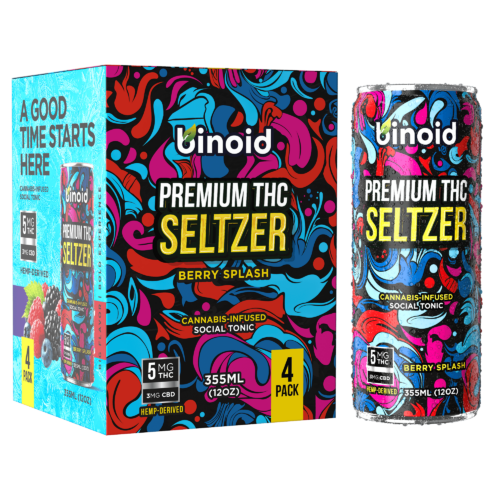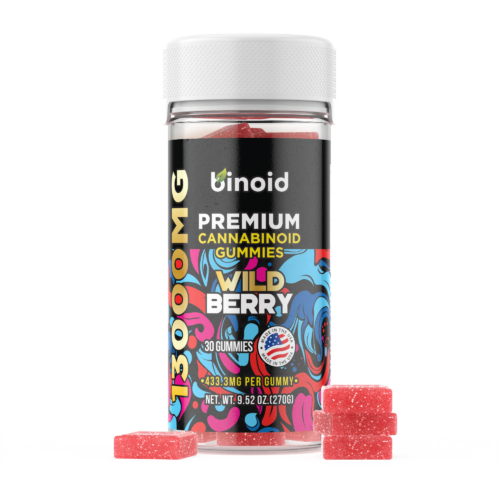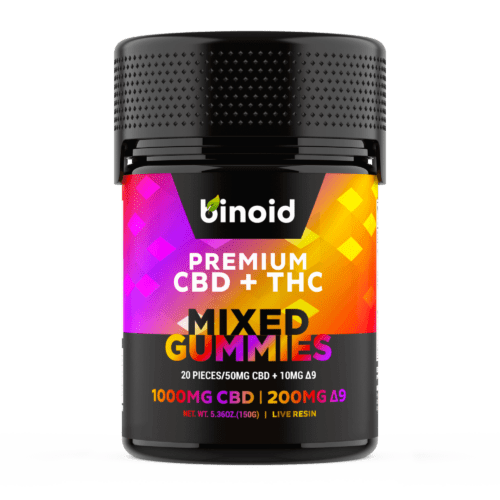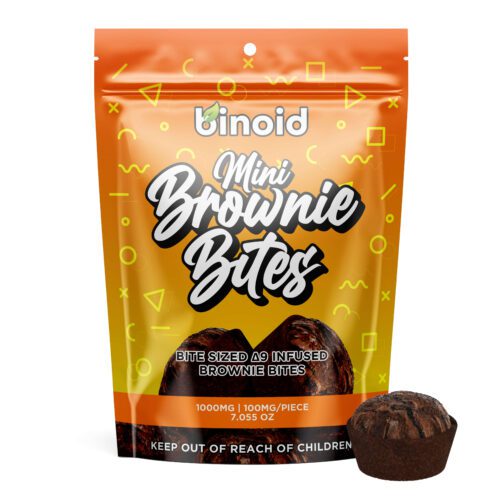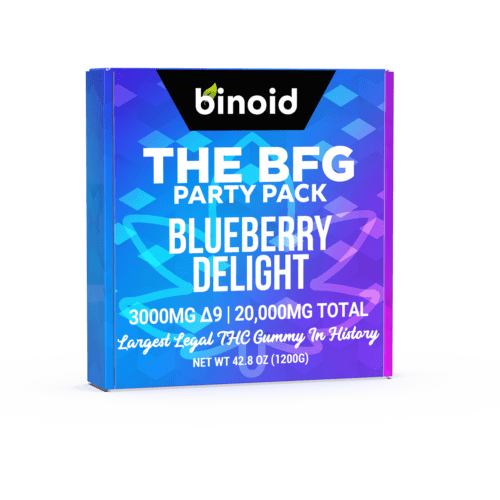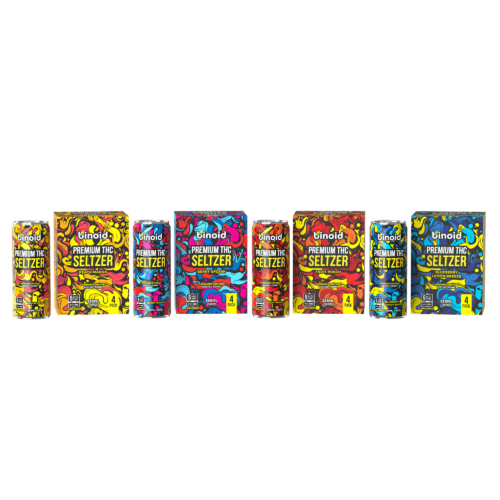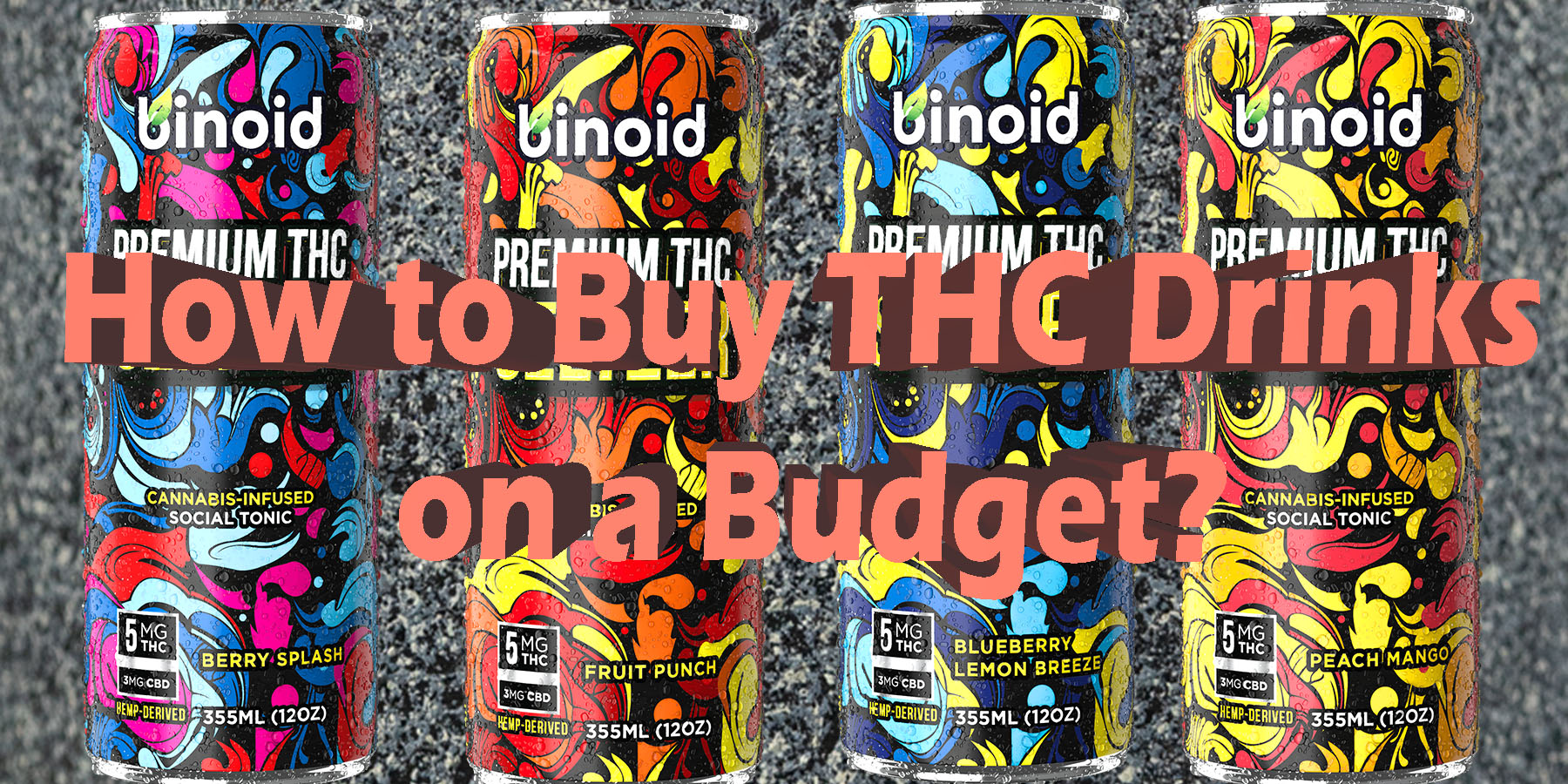
How To Buy THC Drinks On A Budget
There’s a satisfying hiss as you crack open a chilled can, frost condensing on your fingertips in perfect anticipation of the first refreshing sip. In today’s ever-expanding world of cannabis, that can might hold something more than just flavored bubbles; it could be your ticket to a state of blissful relaxation. THC-infused beverages/drinks have gracefully stepped into the spotlight, quickly becoming a favorite for unwinding after a long week or mingling at a social gathering.
Yet, as you browse the gleaming dispensary coolers filled with vibrant seltzers, teas, and sodas, a practical question often bubbles to the surface right alongside the carbonation. You start to wonder if the price for this modern luxury puts it in the category of a rare treat or an accessible pleasure. That number on the tag is more than just a cost; it’s a story of premium ingredients, cutting-edge science, and the promise of a unique, enjoyable experience. It sparks a debate for many between the desire for a sophisticated and the very real constraints of a personal budget.
Unlocking the secrets to navigating this exciting new market means learning how to spot true value and understanding the smartest ways to shop. Finding that perfect balance allows you to fully embrace the world of cannabis drinks, ensuring every delightful sip feels both earned and affordable.
To Buy THC Drinks Click Here
Recommended products
Deconstructing the Price Tag: What’s Really in the Cost of a THC Drink?
To understand if THC drinks are “expensive,” we must first appreciate what we are paying for. The cost is a reflection of a multi-faceted production process, where quality, potency, and innovation command a premium. Unlike a simple soft drink, creating a safe, stable, and enjoyable cannabis beverage is a masterclass in modern food science.
#1: Cannabinoid Content and Potency
This is the most direct cost driver. The higher the dose of cannabinoids, the higher the price. This goes beyond just the milligrams of THC. The entire journey from seed to oil is costly, involving meticulous cultivation, energy-intensive lighting, and climate control. The extraction process itself—using methods like supercritical CO2 or chilled ethanol to pull the oils from the plant material—requires expensive, specialized equipment and highly trained technicians.
Furthermore, many brands now formulate drinks with minor cannabinoids like CBN for relaxation or CBG for a sense of bliss, which are less abundant in the plant and therefore more expensive to isolate. Finally, every batch must undergo rigorous third-party lab testing to verify its potency and screen for pesticides, heavy metals, and residual solvents, adding another layer of mandatory expense that ensures consumer safety and product consistency.
#2: Quality of Ingredients and Formulation
Beyond the cannabis extract, the beverage’s base ingredients are a major factor in its price. A budget-friendly drink might use filtered tap water, artificial flavors, and commodity sweeteners like high-fructose corn syrup. In contrast, a premium beverage builds its cost structure on a foundation of quality. This can include using spring or mineral water as a base, sourcing organic, single-origin fruit juices and purees, and sweetening with pure cane sugar, agave nectar, or all-natural monk fruit.
Many high-end mocktails also incorporate expensive, craft ingredients like artisanal bitters, complex botanical extracts, adaptogens, and hand-crafted shrubs. This commitment to a “clean label” with recognizable, all-natural ingredients costs significantly more but results in a superior taste and a product that appeals to health-conscious consumers.
Recommended products
#3: The Magic of Technology: Nanoemulsion
This scientific step is one of the largest hidden costs and a key differentiator for quality THC drinks. Cannabis oil is hydrophobic, meaning it doesn’t mix with water. To create a stable, homogenous beverage, manufacturers must use an emulsifier. The gold standard is Nanoemulsion, an expensive process that uses high-frequency ultrasound waves to shatter cannabis oil into microscopic droplets, which are then coated with an emulsifier.
This technology requires a substantial capital investment in specialized machinery and significant R&D to perfect. The result is a fast-acting product with higher bioavailability, providing effects in as little as 10-15 minutes. Cheaper drinks might use more basic, less effective emulsion techniques, which can result in slower onset times, a less consistent experience, and sometimes a noticeable cannabis oil taste.
#4: The Influence of Branding, Packaging, and Marketing
In a competitive market, building a brand is a costly endeavor. This includes everything from initial brand strategy and logo design to extensive marketing campaigns. These can involve high-profile event sponsorships, influencer collaborations, and advertising in cannabis-friendly publications and platforms. Packaging is another major expense.
While a standard aluminum can is relatively cheap, many brands invest in custom-designed cans with tactile finishes, unique bottle molds, and elaborate multi-pack cartons to stand out on the shelf. These premium packaging choices, combined with the significant marketing spend required to build consumer trust and recognition, are factored directly into the final price of each THC drink.
#5: The Burden of Compliance: Taxes and Regulations
The cannabis industry is one of the most heavily taxed and regulated in the world, and these costs are passed on to the consumer. A single THC beverage is subject to multiple layers of taxation that don’t apply to a regular soda. This can include a cultivation tax charged by weight at the farm, a state excise tax at the point of distribution (often a percentage of the wholesale price), and finally, special state and local cannabis sales taxes at the retail counter. Beyond taxes, there are immense compliance costs. Businesses pay hefty annual licensing fees, invest in sophisticated “track-and-trace” software to monitor products from seed to sale, and retain legal counsel to navigate the ever-changing patchwork of state and local rules.
Recommended products
A Tour of the Cooler: How Drink Type Impacts Price
The sheer variety of THC drinks is a testament to the industry’s creativity, as this diversity also creates a spectrum of price points, allowing consumers to find an entry point that suits their budget:
THC Seltzers and Sparkling Waters: Often the most affordable entry into the world of cannabis beverages, seltzers are designed to be light, refreshing, and “sessionable.” Their lower price point is a result of a simpler formulation, typically involving sparkling water, a modest dose of THC (2-5mg), and subtle, natural fruit essences. They are marketed as a low-calorie, guilt-free alternative for social situations, appealing to new consumers and those seeking a mild, controllable buzz.
THC Sodas, Lemonades, and Iced Teas: This popular mid-range category leans into nostalgia and bolder flavor profiles. The production cost is slightly higher due to the inclusion of more ingredients like cane sugar and concentrated fruit juices to create those classic, sweet tastes. The THC dosage is often a step up, commonly found in the 5mg to 10mg range, which also contributes to their moderate pricing. These are the workhorses of the THC drink world, offering a familiar and satisfying experience.
THC Coffees and Specialty Teas: This segment caters to consumers looking to integrate THC into their daily rituals. The price can vary significantly based on the quality of the core ingredient. A beverage made with single-origin, ethically sourced coffee beans that have been carefully cold-brewed will command a much higher price than a simple canned tea. The challenge and cost of infusing THC without compromising the delicate flavor profile of the coffee or tea also adds to its premium positioning.
THC Cocktails and Mocktails: Occupying the highest tier of the market, these beverages are crafted to replicate the complexity and sophistication of a mixologist-made THC cocktail. Their premium price reflects a long and expensive ingredient list, which can include multiple fruit juices, non-alcoholic spirits, artisanal bitters, herbal extracts, and complex syrups. They offer a layered, evolving flavored experience and are marketed as a true, one-to-one replacement for a high-end alcoholic drink, making them the most expensive single-serve option.
THC-Infused Wines and Beers (Non-Alcoholic): This highly specialized and innovative category carries a premium price due to its complex, multi-stage production process. First, a traditional alcoholic wine or beer is created. Then, it must undergo an expensive secondary process to gently remove the alcohol while preserving its characteristic flavor and aroma. Only after this de-alcoholization is complete can the THC infusion take place, making it one of the most technologically demanding and costly beverages to produce.
Recommended products
Value Beyond the Price Tag: Reading the Label Like a Pro
To truly shop on a budget, you need to become an expert in spotting value. The product label is your treasure map, revealing clues about the quality, effect, and overall worth of the beverage inside. Going beyond the flashy branding and the main THC milligram number can help you make much smarter purchasing decisions:
Check the Cannabis Extract Type: Not all THC is created equal. The label may specify the type of cannabis extract, which impacts the experience and cost.
Distillate: This is a highly refined oil where THC has been isolated. It’s versatile and often more affordable, providing a straightforward THC effect.
Full/Broad-Spectrum: These extracts preserve other cannabinoids and terpenes, which work together in an “entourage effect” for a more nuanced experience. They are more complex to produce and carry a higher price.
Live Resin/Rosin: The absolute premium tier. These extracts are made from fresh-frozen cannabis plants to preserve the full, rich profile of flavors and terpenes. THC drinks made with live resin are expensive but offer the most authentic and robust expression of the plant.
Look for Terpene Information: Terpenes are the aromatic compounds in cannabis responsible for its distinct smells and flavors. Some premium brands are now adding specific botanical or cannabis-derived terpenes back into their drinks to enhance the flavor and subtly influence the effects. If a label highlights terpenes like Myrcene, Limonene, or Linalool, it signifies a sophisticated, high-quality product designed for a tailored experience.
Scan the Ingredient List: A quick scan tells you about the quality tier. “Pure Cane Sugar” and “Real Fruit Juice” signal a premium product compared to “High-Fructose Corn Syrup” and “Artificial Flavors.” The shorter and more recognizable the ingredient list is, the more likely you’re holding a high-quality craft beverage.
Confirm the Serving Size and Dates: Always check if the dosage on the front is for the entire container or for a single serving; this is crucial for calculating your cost per experience. Also, check the manufacturing or packaging date. Cannabis beverages are best consumed fresh for optimal flavor and effect, so a more recently produced product often represents better value.
Recommended products
Your Smart Sipping Strategy: A Guide to Budget-Friendly Buying
Enjoying the world of THC beverages doesn’t have to be a splurge. With a little knowledge and some strategic shopping, you can make it a regular and affordable part of your lifestyle. Below are the most effective ways to save money without compromising on your experience:
Dose Smartly for Cost-Per-Experience: The goal is to find the best value for your desired effect. A high-potency, 100mg THC beverage that costs $25 may seem expensive, but it provides ten individual 10mg doses at a cost of only $2.50 each. Compare that to buying a single-serving 10mg drink for $8. If you have the discipline to portion it correctly, the higher-potency bottle offers a significantly lower cost-per-experience.
The Power of the Pack: Buy in Bulk: Buying a single can will always be the most expensive way to enjoy a THC drink. Purchasing a 4-pack or 6-pack can immediately reduce the per-can cost by 15-25%. If you find a product you love, ask your dispensary if they offer case discounts (typically 12 or 24 cans), which can provide even deeper savings. Consider splitting a case with friends to make the upfront cost more manageable.
Become a Deal Hunter: The cannabis market is competitive, so always be on the lookout for promotions. Sign up for email and text alerts from local dispensaries to get notified about weekly specials, flash sales, and holiday deals. Look for specific promotions like BOGO (Buy One, Get One free/50% off) offers and bundle deals, where buying a beverage with another product type might unlock a special discount.
Loyalty Has Its Rewards: Dispensary loyalty programs are a long-term strategy for savings. Most programs are free to join and allow you to accumulate points with every purchase. These points can be redeemed for store credit, specific product discounts, or exclusive merchandise. Some programs have tiers, where reaching a certain spending level can unlock even better reward rates and access to members-only sales events.
Explore Beyond the Big Names: While national brands have a reputation for consistency, don’t overlook a dispensary’s own “house” brand or other smaller, local producers. These brands often have minimal marketing budgets and simpler packaging, allowing them to offer a high-quality product at a much lower price point. Ask your budtender for their recommendations on high-value brands that the regulars prefer.
Subscribe and Save: Many brands that sell directly to consumers online now offer subscription models. By committing to a recurring monthly or bi-monthly delivery, you can often secure a standing discount of 10-20% off the retail price. This is an excellent “set it and forget it” strategy for your favorite go-to beverage but always be sure to check the cancellation policy before you commit.
Shop Around and Compare Menus: Do not assume that all dispensaries charge the same price for the same product. Prices can vary significantly from one shop to another based on their purchasing power and pricing strategy. Use online platforms like Weedmaps or Leafly to browse the menus of several local dispensaries before you shop. A few minutes of digital window shopping can help you find the best possible price on your preferred THC drinks.
Time Your Purchases Strategically: Talk to your budtender and learn the rhythm of their dispensary’s sales cadence. Many shops have specific days of the week for discounts on certain categories (e.g., “Thirsty Thursday” for beverage deals). Furthermore, brand representatives often visit dispensaries to host “pop-up” events, which almost always feature special promotions and BOGO deals on their products. Following your favorite brands and dispensaries on social media is the best way to stay informed about these events.
The Art of the Savvy Sip
The conversation around cannabis-infused drinks ultimately moves beyond the price tag to a more personal reflection on what an ideal experience is worth. Choosing your perfect beverage becomes an act of curation, much like selecting a fine wine or a craft beer to perfectly complement a mood or a moment. Armed with a deeper appreciation for the artistry and science within each can, you can now look at a dispensary cooler not as an intimidating expense, but as a menu of possibilities.
The truly savvy consumer understands that the objective is not simply to save money, but to invest it wisely in a product that reliably delivers the desired feeling of bliss and relaxation. You are now empowered to be a connoisseur of your own contentment, navigating the options with the confidence of an insider. As this exciting beverage landscape continues to innovate, your newfound knowledge is the key to unlocking its most rewarding and affordable treasures. So go forth and discover that perfect drink that doesn’t just fit your budget, but elevates your entire experience from the first curious glance to the final, satisfying sip.

